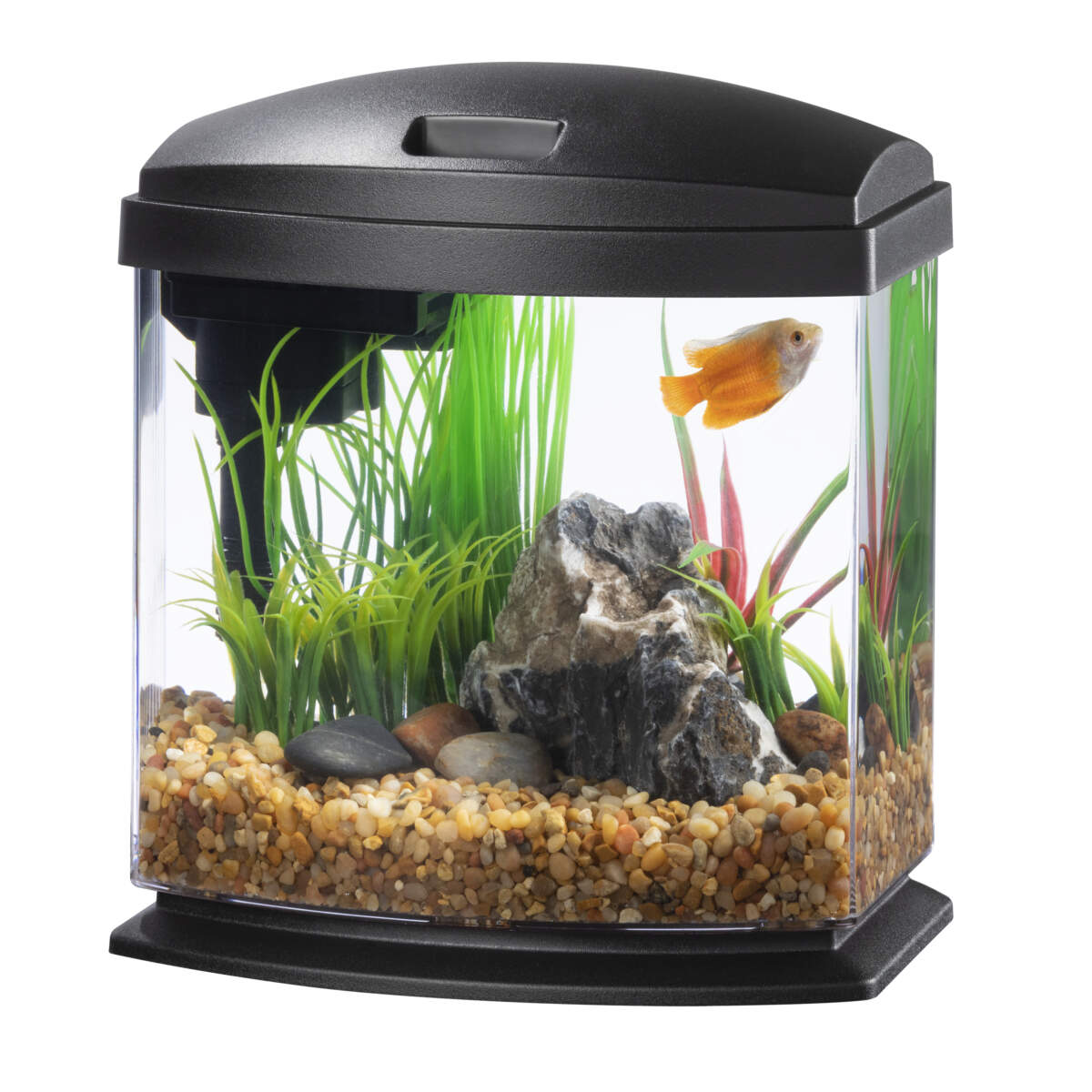Aquarium Snail Facts
Snails eat algae and organic debris, and they are beneficial to the overall health and balance of an aquarium. Some species are attractive and interesting to observe, and many hobbyists value them as pets just like fish. But some species reproduce rapidly, and a sudden population explosion can be a surprise, especially if you do not know where they came from. An unplanned snail outbreak can be an indicator of less than ideal conditions and the need to do some tank maintenance.
Here are some interesting points to consider about snails:
- Snails enter an aquarium one of two ways: either they are purchased and introduced intentionally, or they sneak in on live plants, rocks, driftwood, decorations or in gravel cultures.
- Snails that sneak in are usually the types that multiply rapidly and are considered by some aquarists as "bad" or nuisance snails. They include Ramshorns, Malaysian Trumpets and pond snails.
- Ramshorn, Trumpet and pond snails make great scavengers for shrimp tanks and fry-rearing tanks.
- Sometimes Ramshorn snails will eat live plants when there is no other source of food. Most other snails will leave your plants alone.
- Malaysian Trumpet snails live in the gravel by day and come out at night. They help keep the gravel clean and aerated. Trumpet snail outbreaks are usually an indication that the aquarium needs to be cleaned more regularly.
- "Good snails" like Mystery, Inca, Nerite, Assassin and Rabbit snails make attractive and interesting aquarium pets. All except Nerite snails can reproduce in your aquarium, but usually at a very slow rate.
- Nerite snails need brackish or saltwater to reproduce, so they are unlikely to multiply in your aquarium.
- Mystery and Inca snails lay their eggs above the water, usually on the underside of the aquarium cover, so if you want to breed them, leave an air space for them between the water surface and tank lid.
- Snail outbreaks are usually a response to available food such as uneaten fish food, dead plant matter and other organic debris. If you have a snail outbreak, reduce feeding, do more frequent water changes, vacuum the substrate and clean your filter more often.
- Nuisance snails can be removed manually by placing Aqueon Algae Rounds or Bottom Feeder Tablets in the aquarium overnight and removing them with the attached snails in the morning.
- To reduce the number of nuisance snails in your aquarium, try squishing a few at a time and watch your fish gobble them up!
- Assassin snails eat nuisance snails and they will not overrun your aquarium. They are cool-looking too!
- Certain species of loaches, puffer fish, cichlids and catfish are known to eat nuisance snails, but these fish are not suitable for every aquarium. Always research new fish before purchasing!
- Use chemicals designed to eliminate snails with caution. They are harmful to plants, shrimp and even sensitive fish. In addition, a mass die-off of snails can cause ammonia and nitrite to rise to dangerous levels.
Next time you see some cool-looking snails at your local fish store, why not consider adding a few to your aquarium?





